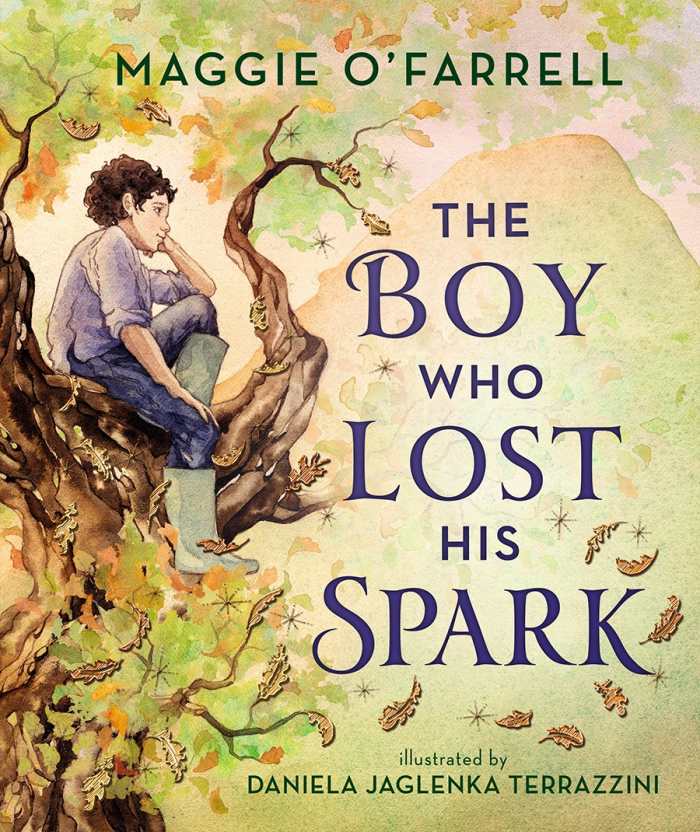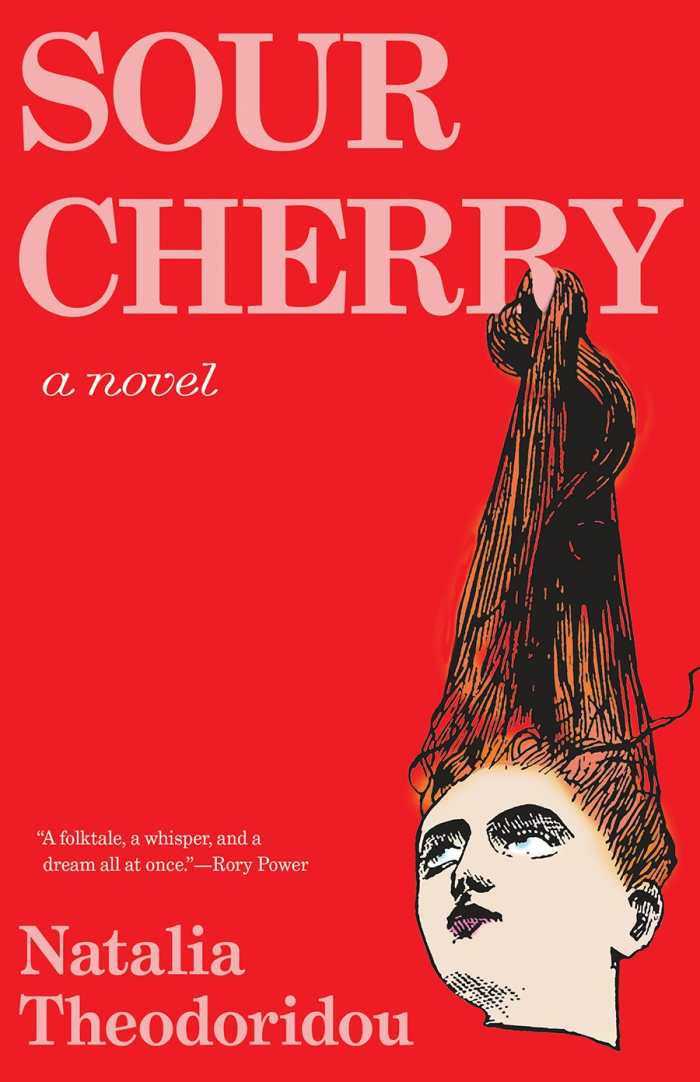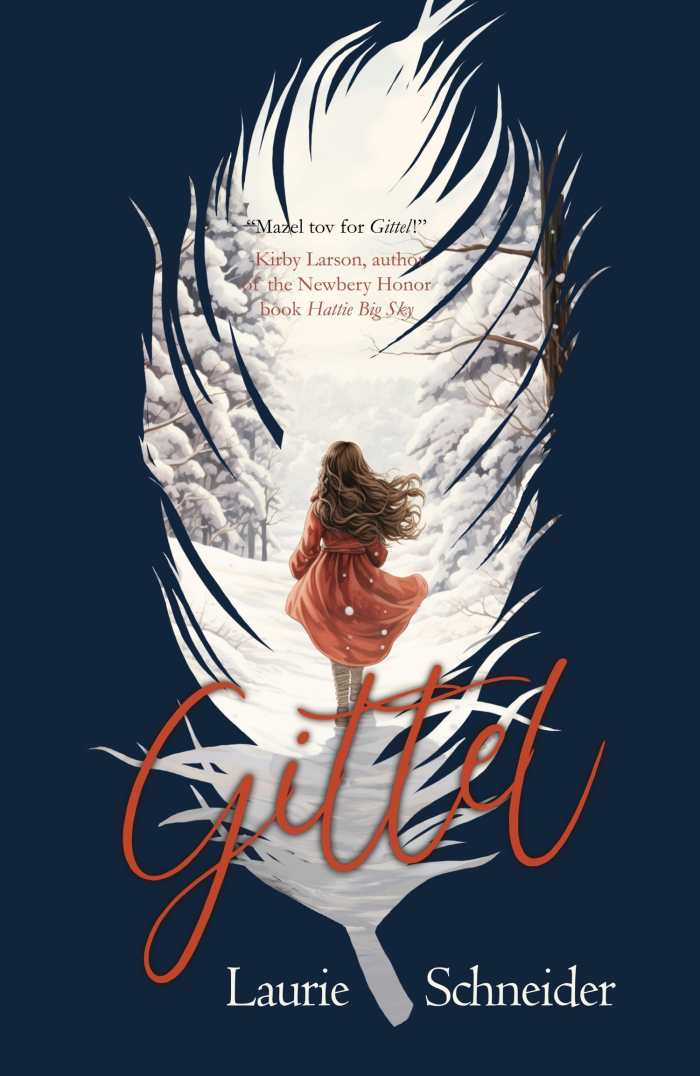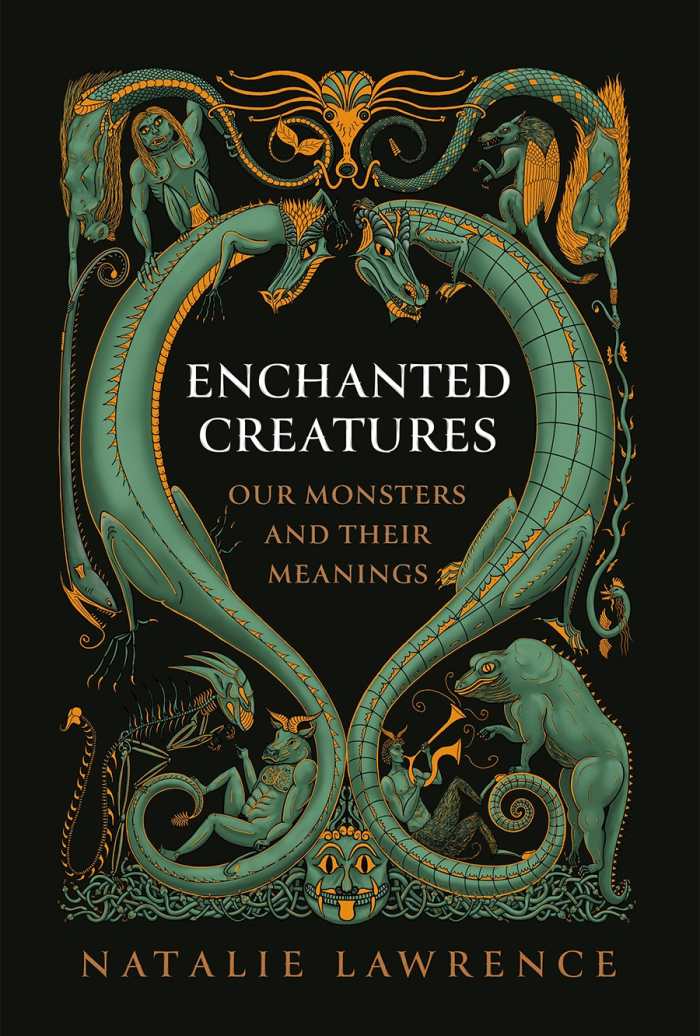Book of the Day Roundup: April 7-11, 2025
The Boy Who Lost His Spark

Maggie O’Farrell
Daniela Jaglenka Terrazzini, illustrator
Walker Books US
Softcover $9.99 (112pp)
978-1-5362-4042-9
Buy: Local Bookstore (Bookshop), Amazon
Moving to a cottage in the countryside unsettles a boy in Maggie O’Farrell’s fantasy story The Boy Who Lost His Spark.
Jem misses the city. He struggles with school: A learning disability is hinted at, and he’s prone to fidgeting. His sister, though, is enchanted by their village’s legend about noukas, furry, impish creatures that live in the volcano. Nouka visitations are spurred by people’s unhappiness; their harmless pranks, from exchanging sugar for salt to stirring up a cat, shake people out of their brooding. But Jem doesn’t think noukas are real. When one of the last noukas senses Jem’s tense mood, it prompts a mysterious encounter that releases Jem from his fears of not belonging.
Read-aloud cadences and poetic imagery, as with likening the experience of climbing into a tree and sitting among its leaves to being on a “great, green ship in the wind,” pair with outstanding, cozy illustrations. These feature nostalgic items including a bentwood chair, a Linzer cookie, and a pitcher of custard alongside a light gray swirling motif that suggest lyrics to a nouka song. The absence of modern touches enhances the fairy-tale ambiance, in which the noukas have existed for so long that they know more village history than anyone.
Overt messages about belief (people don’t need to see the air they breathe to believe in its existence, the book notes) complement the book’s march toward Jem’s inevitable change of heart, which is enchanting because of the expressive artwork, in which his feelings of astonishment register well.
In the gentle fantasy story The Boy Who Lost His Spark, a boy made separate by his own self-awareness comes to joy with a little help from an otherworldly friend.
KAREN RIGBY (February 17, 2025)
Sour Cherry

Natalia Theodoridou
Tin House
Softcover $17.95 (288pp)
978-1-963108-19-4
Buy: Local Bookstore (Bookshop), Amazon
In Natalia Theodoridou’s haunting novel Sour Cherry, women are entrapped by the gluttonous monstrosities of their sons and husbands.
To elucidate her husband’s abuse, a mother tells her child a story about a cursed lord. She begins with Agnes, the woman hired to raise the lord throughout his boyhood. In adulthood, the lord, always blighting the land, animals, and humans around him, is unable to establish a permanent, rooted home. Angry mobs force his family to relocate. These events are covered by the lord; his first wife, Eunice; his son, Tristan; his countless ghost-wives; and by the mother, whose story weaves into reality.
The mother’s tale simmers with dark enchantment and Gothic menace. The lord’s childhood “castle” and the homes he later inhabits exist on infected “land [that] turns corpses into flowers,” rendering livestock impotent. The language is atmospheric and surprising, as with the description of a painting of “a woman with a rosebush for hair, holding an apple and gazing at the viewer with not a hint of emotion.” Intimate and self-aware, the characters are inventive in chronicling nested fairy tales and unsettling metamorphoses: Adventurers, lovers, kings, queens, princesses, and princes transform into beasts.
Though the lord’s destructiveness is inherited—even his wife is “a reverse Scheherazade who can’t be saved until all her stories are told, retold, told again”—his innate monstrosity is questioned. With tenderness, he comforts crying Eunice and files down his clawlike nails to prevent injuring her. He falls for a shopkeeper’s storied collectible miniatures amid the decay and violence. The women close to him cling to faint if desperate hope of his changeability: “If she loved him enough, maybe the curse would be lifted.”
Dark fairy tales reflect the traumas inflicted on women by men in the heartbreaking novel Sour Cherry.
ISABELLA ZHOU (February 17, 2025)
Magda, Intergalactic Chef
Book 1: The Big Tournament

Nicolas Wouters
Mathilde Van Gheluwe, illustrator
Graphic Universe
Softcover $15.99 (160pp)
979-876564322-8
Buy: Local Bookstore (Bookshop), Amazon
A girl competes in an intergalactic cooking contest in Nicolas Wouters’s graphic novel Magda, Intergalactic Chef.
Magda is hesitant about participating in her planet’s cooking tournament but does so to appease her family. Her confidence grows as she improvises and wins a spot at the grand intergalactic tournament. She and her family make it to the tournament despite space travel troubles, and Magda rediscovers her competitive fire.
Each round of the competition has its own excitement—for example, a preliminary round requires contestants to create dishes to attract a finicky bird that holds the keys to unlock the next stage in the tournament. And Magda learns that there’s more to the tournament than it appeared—and that winning the prize could have galaxy-wide effects.
Magda is a compelling heroine who wrestles to decide what’s most important to her. While the book ends before the final competition is complete, she is reminded that “it’s not the destination … it’s the journey.” The quirky illustrations include pitch-perfect humor, as with Magda’s singed, proud face as she displays one of her culinary creations. The art also excels at depicting various planets and their exotic flora and fauna, like the “rhinobeetle.” Food competitions feature ingredients that are familiar but with distinctive alien twists, as with the “artishock” and “zebulon eggplant”; the visual variety is fascinating.
Magda, Intergalactic Chef is a whimsical graphic novel in which a girl who hopes to be a great chef helps others in the process of pursuing her dreams.
PETER DABBENE (February 17, 2025)
Gittel

Laurie Schneider
Fitzroy Books
Softcover $14.95 (144pp)
978-1-64603-551-9
Buy: Local Bookstore (Bookshop), Amazon
In Laurie Schneider’s stirring historical novel Gittel, a young immigrant makes her way in a small town where some people are hostile to differences.
Once, Gittel’s family lived in fine circumstances among a proud Jewish community. After a pogrom tore through their city in Tsarist Russia, though, they fled. They wound up in the farming community of Mill Creek, Wisconsin—one of thirteen Jewish families to resettle there. While most in their melting pot community welcome them, differences and all, the family of a classmate, Karl, is the exception: He taunts her with epithets, and his father, a fire-and-brimstone preacher, rails against all that he considers evil, including Jews, from pulpit and barstool alike.
Sharp-tongued and quick-witted, Gittel refuses to cower beneath Karl’s cruelties–in fact, she throws them right back at him. She also worries about what her life will become when eighth grade ends. Though she’s a gifted student, there’s no upper school in Mill Creek. Still, she prepares to wow crowds with a poetry recitation at a local festival; practices Jewish traditions beside her supportive grandparents and parents; saves her community from a roof collapse; and experiences the starriness of first love. When she has the opportunity to see what undergirds Karl’s hurtful behaviors, fresh compassion is added to her growing list of accomplishments.
Gittel is an irresistible historical novel. Set between 1911 and 1912, the book captures a Midwestern town’s coming-of-age in the prewar period well. Yiddish words are sprinkled across its pages, fleshing out Gittel’s family life, and details as of Jane Addams’s suffragism, teetotalers breaking saloon bottles, and Emma Lazarus’s “The New Colossus” give shape to the growing pains and values of the era. Gittel is the perfect guide through these complex times—self-aware, determined, and eager to flourish.
MICHELLE ANNE SCHINGLER (February 17, 2025)
Enchanted Creatures
Our Monsters and Their Meanings

Natalie Lawrence
Pegasus Books
Hardcover $29.95 (368pp)
978-1-63936-865-5
Buy: Local Bookstore (Bookshop), Amazon
Natalie Lawrence’s work of cultural inquiry, Enchanted Creatures, analyzes fabled and mythical beasts across human history, folklore, and literature, asking why monsters persist in human imaginations.
Organized into sections on monsters of creation, nature, and knowledge, the chapters present evidence from archaeology, myths, epics, science, and psychology. Each focuses on creatures and their variations: horned gods and hunters from cave paintings, cosmic dragons like Tiamat, the Minotaur, snake women like Medusa, Grendel and outsider monsters, leviathans and deep sea terrors, scaly and uncategorizable critters like the pangolin, and dinosaurs. By putting these fantastical creatures into conversation with religions and scientific discoveries, Lawrence demonstrates how every culture’s worldview has a place for monsters, and how what is deemed monstrous says more about people than about “monsters.” For example, by juxtaposing experiments on snake fixations with accounts of the snake in the garden of Eden, the snake women chapter argues that the association of snakes with danger, and often with women, has been with humans since our earliest days.
Western myths and stories are the most prominent, though cross-cultural examples abound, as with tie-ins from the Japanese franchise Godzilla, which Lawrence interprets as a reflection on not only nuclear war but also of the interdependent relationship humanity has with nature. Humans attempt to domesticate monsters by telling stories about them, but these stories are multifaceted and often reveal how people project their innermost fears onto scapegoated figures, as with the Minotaur and its contemporary descendants in bull-fighting rings.
Comprehensive yet accessible, Enchanted Creatures perches at the intersection of literary criticism and cultural studies with its exciting examinations of the beasts that accompany humanity through dreams and nightmares alike.
JEANA JORGENSEN (February 17, 2025)
Kathy Young
